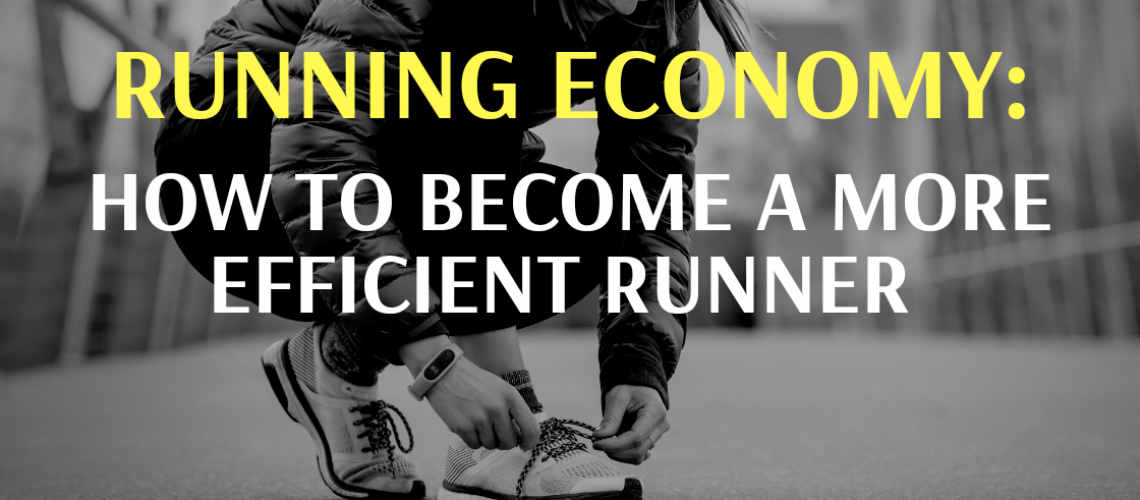Running Economy – What’s the big deal?
Simply put, running economy is equivalent to fuel per kilometer in a car. The old cool kid on the block for measuring running capacity was VO2 Max – which is the maximum volume of oxygen that can be used. The problem being, most running events don’t occur at anywhere near maximal intensity; and therefore, a more important measure is how much oxygen an individual uses at a sub-maximal speed – Running Economy.
Factors that Affect Running Economy
Just like anything else in sports, there are factors that you can’t control (ie. Intrinsic factors – height, foot size, pelvis shape, etc) and factors that you CAN control. Here are some of the factors that you CAN control:
– Minimal Vertical Displacement (ie. How high you are in the air between each stride)
– Arm Movement (the more arm movement, the more inefficient the run)
– Ground contact time (Varies with speed – but generally, the more time you are in contact with the ground in-between strides; the more inefficient the run)
–> All 3 of these factors can be modified with Strength Training – and specifically, the research has pointed to PLYOMETRICS
1. Run more!
Remember the first time you tried to squat with a bar? How efficient would you say you were at generating force? One would predict that when learning a new skill, you tend to be inefficient. However, as the skill matures, we learn to be more economical. Regular running will improve running economy – specifically, higher volume, slower running – which shows the largest increased in mitochondria – which means more effective use of oxygen by the muscle; as well as a learned neuromuscular response to decrease a runner’s vertical displacement when they run. This equates to – better energy utilization, and less time going up and down à More energy saved = increased fuel economy!
2. Strength Training & Plyometrics
The research absolutely proves that strength training improves running economy – not because of the increase in strength, but because of the improved function of the neuromuscular system. Let’s break it down:
When you are running, a great deal of muscle activity occurs just BEFORE your foot lands o the ground, as the muscle “pre-activates” to increased stiffness of the joints before landing – which absorbs shock, but helps the muscle-tendon unit to store more energy. This muscle-tendon unit behaves like a spring, and as you push off, the energy stored in this tendon results in a more forceful push-off. So basically, if we can train this cycle (the “stretch-shortening cycle”), we can use less oxygen and do the same job, by relying on the elasticity of our tendons.
In running, this stretch-shortening cycle is crucial to
performance. Fatigue over the course of the race has been shown to INCREASE contact times, resulting in
more force needed to be generated vs “stored” during each stride. Picture a
bouncy ball off the wall – imagine it gets softer every time you bounce it.
Eventually, you’ll need to throw it much harder for it to bounce back the same distance.
The solution = PLYOMETRIC TRAINING –
which is a form of power/strength training using hopping/jumping/bounding. The
entire premise of plyometrics is to improve the stretch-shortening cycle (NOT
cardio, which we unfortunately see too much….). The end result = improved
efficiency in the stretch-shortening cycle = the body can produce the same
force with less energy demand; while also increasing the tendon’s ability to
generate stiffness and bear load.
PLYOMETRICS FOR BEGINNERS
- Plyometric training should ALWAYS be preceded by a proper warm-up
- Plyometric training should ALWAYS go before strength/hypertrophy exercises
- 48-72HRS of rest between Plyometric training sessions
Plyometric workouts are graded by the amount of “foot
contacts” in a session:
–
Beginner: 80-100 contacts
–
Intermediate (some plyo experience): 100-120 contacts
–
Advanced (lots of experience): 120-140 contacts
To make Plyometric exercises more difficult, you
DON’T just do more jumps!!
1.
Decrease contact points (ie Single-leg)
2.
Increase the speed during each movement
3.
Increase the height of the jump (AS LONG AS YOU CAN LAND PROPERLY)
4.
Add weight to the jump

